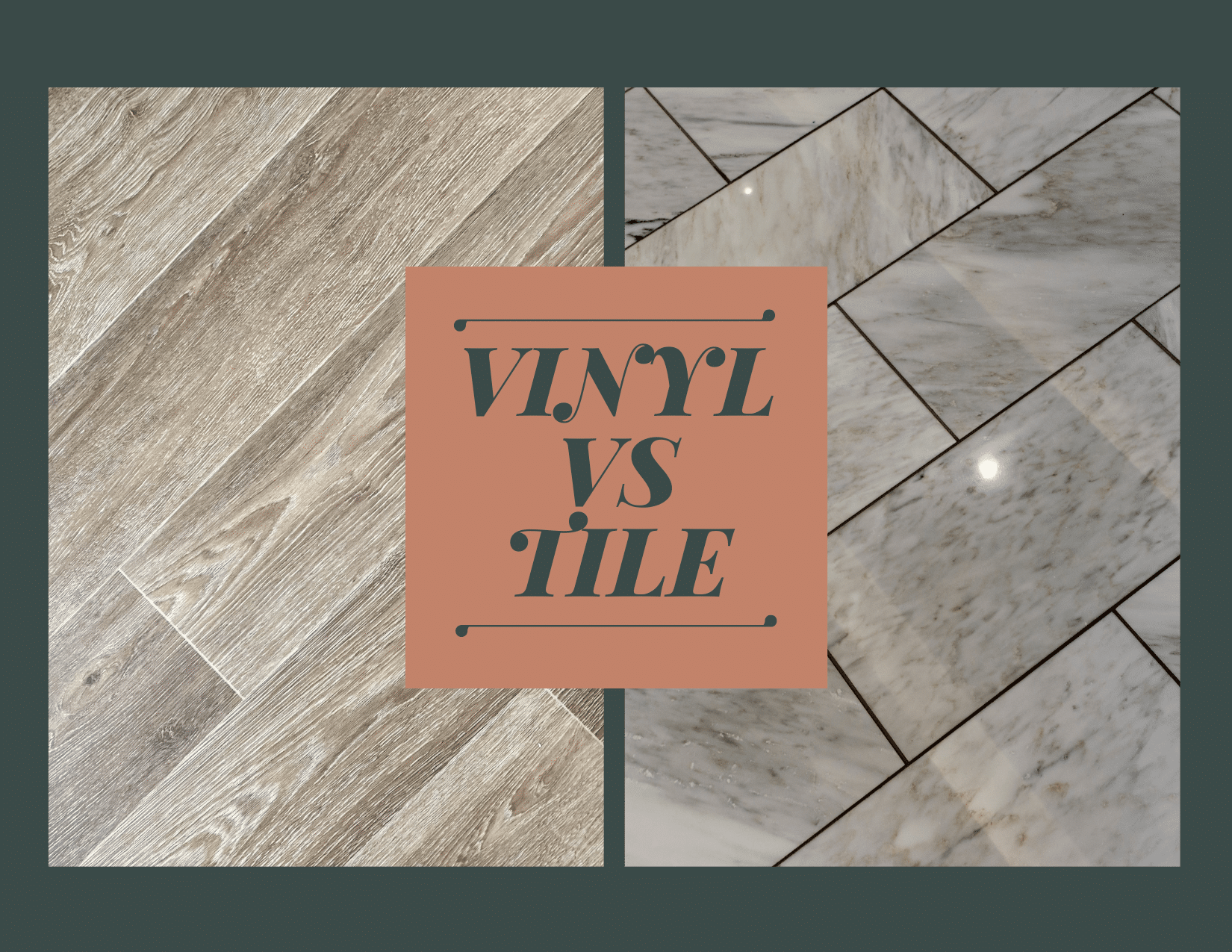
Vinyl Flooring vs. Tile Flooring: Key Differences for Your Remodeling Project
When embarking on a remodeling project, choosing the right flooring can significantly impact the overall look, feel, and functionality of your space. Two popular options are vinyl flooring and tile flooring. Both have their unique advantages and characteristics, making them suitable for different needs and preferences. Here, we’ll explore the key differences between vinyl flooring and tile flooring to help you make an informed decision for your remodel.
1. Material Composition
Vinyl Flooring: Vinyl flooring is made from synthetic materials, primarily PVC (polyvinyl chloride). It comes in various forms, including sheets, planks, and tiles, and often mimics the appearance of natural materials like wood and stone.
Tile Flooring: Tile flooring can be made from a variety of materials, including ceramic, porcelain, and natural stone (such as marble or slate). Each type of tile has its own distinct characteristics and benefits.
2. Durability and Lifespan
Vinyl Flooring: Vinyl is highly durable and resistant to water, making it an excellent choice for areas prone to moisture, such as kitchens, bathrooms, and basements. High-quality vinyl can last 10-20 years with proper care.
Tile Flooring: Tile is also extremely durable and water-resistant, particularly porcelain and ceramic options. Natural stone tiles are strong but may require more maintenance. Tile flooring can last for decades, often outlasting vinyl flooring.
3. Installation Process
Vinyl Flooring: Vinyl is relatively easy to install, especially in plank and tile forms, which often feature a click-and-lock system. It can be installed over existing floors with minimal preparation, making it a convenient option for DIY enthusiasts.
Tile Flooring: Tile installation is more labor-intensive and typically requires professional expertise. The process involves preparing the subfloor, laying out the tiles, applying adhesive, and grouting. It’s a more time-consuming and complex task compared to vinyl installation.
4. Aesthetic Appeal
Vinyl Flooring: Vinyl offers a wide range of design options, including realistic wood and stone looks. Modern vinyl can closely mimic natural materials, providing a stylish and affordable alternative.
Tile Flooring: Tile provides a timeless and elegant appearance, especially natural stone options. The variety of colors, patterns, and textures available with tiles allows for creative and customized designs.
5. Comfort and Warmth
Vinyl Flooring: Vinyl is softer and warmer underfoot compared to tile, making it more comfortable to walk on, especially in colder climates. Some vinyl options also include an added layer of cushioning for extra comfort.
Tile Flooring: Tile is hard and cool to the touch, which can be less comfortable underfoot, particularly in colder seasons. However, tile works well with underfloor heating systems, which can add warmth and comfort.
6. Maintenance and Cleaning
Vinyl Flooring: Vinyl is low-maintenance and easy to clean with regular sweeping and occasional mopping. It’s resistant to stains and scratches, making it suitable for high-traffic areas.
Tile Flooring: Tile is also easy to maintain, but grout lines can accumulate dirt and may require periodic sealing to prevent staining. Regular cleaning and occasional deep cleaning of grout lines are necessary to keep tile floors looking their best.
7. Cost
Vinyl Flooring: Vinyl is generally more affordable than tile, both in terms of material costs and installation expenses. It provides a cost-effective solution for homeowners on a budget.
Tile Flooring: Tile can be more expensive, particularly natural stone options. The installation cost is also higher due to the complexity of the process. However, the longevity and aesthetic appeal of tile can justify the investment.
Conclusion
Choosing between vinyl flooring and tile flooring for your remodeling project depends on your specific needs, budget, and aesthetic preferences. Vinyl offers affordability, ease of installation, and comfort, while tile provides durability, elegance, and a timeless look. By considering the unique advantages of each material, you can select the flooring that best suits your home and lifestyle.
